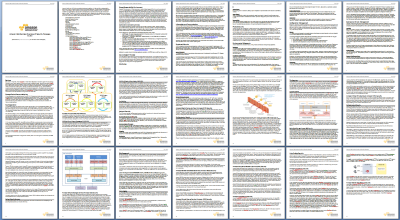
Surge is a conference put on by OmniTI targeting practical Scalability matters. OmniTI specializes in helping people solve their scalability problems, as is only natural, as it was founded by Theo Schlossnagle, author of the canonical Scalable Internet Architectures.
Now that Surge 2011 is on the horizon, they've generously made available nearly all the videos from the Surge 2010 conference. A pattern hopefully every conference will follow (only don't wait a year please). We lose a lot of collective wisdom from events not being available online in a timely manner.
In truth, nearly all the talks are on topic and are worth watching, but here are a few that seem especially relevant:
- Going 0 to 60: Scaling LinkedIn by Ruslan Belkin, Sr. Director of Engineering, LinkedIn.
- Have you ever wondered what architectures the site like LinkedIn may have used and what insights teams have learned while growing the system from serving just a handful to close to a hundred million of users?
- Scaling and Loadbalancing Wikia Across The World by Artur Bergman, VP of Engineering and Operations, Wikia.
- Wikia hosts around a 100 000 wikis using the open source Mediawiki software. In this talk I'll take a tour through the process of taking a legacy source code and turning it into a globally distributed system.
- Design for Scale - Patterns, Anti-Patterns, Successes and Failures by Christopher Brown, VP of Engineering, Opscode.
- This isn't your "Gang of Four". Christopher will discuss his experiences building Amazon's EC2 and the Opscode Platform, and the experiences of others designing large-scale online services.
- Quantifying Scalability FTW by Neil Gunther, Founder/Principal Consultant, Performance Dynamics.
- Successful scalability requires transforming your data to quantify the cost-benefit of any architectural decisions. In other words: information = measurement + method.
- Database Scalability Patterns by Robert Treat Lead Database Architect, OmniTI.
- In Database Scalability Patterns we will attempt to distill all of the information/hype/discussions around scaling databases, and break down the common patterns we've seen dealing with scaling databases.
- From disaster to stability: scaling challenges of my.opera.com by Cosimo Streppone, Lead Developer, Opera Software.
- This talk tells the story of these last 3 years. Our successes, our failures, and what remains to be done.
- Embracing Concurrency at Scale by Justin Sheehy CTO, Basho Technologies.
- Justin will focus on methods for designing and building robust fundamentally-concurrent distributed systems. We will look at practices that are "common knowledge" but too often forgotten, at old lessons that the software industry at large has somehow missed, and at some general "good practices" and rules that must be thrown away when moving into a distributed and concurrent world.
- Scalable Design Patterns by Theo Schlossnagle, Principal/CEO, OmniTI.
- In this talk, we'll take a whirlwind tour though different patterns for scalable architecture design and focus on evaluating if each is the right tool for the job. Topics include load balancing, networking, caching, operations management, code deployment, storage, service decoupling and data management (the RDBMS vs. noSQL argument).
- Why Some Architects Almost Never Shard Their Applications by Baron Schwartz, VP of Consulting, Percona.
- "Shard early, shard often" is common advice -- and it's often wrong. In reality, many systems don't have to be sharded.
- Scaling myYearbook.com - Lessons Learned From Rapid Growth by Gavin M. Roy, Chief Technology Officer, MyYearbook.
- In this talk Gavin will review the growing pains and methodologies used to handle the consistent growth and demand while affording the rapid development cycles required by the product development team.








